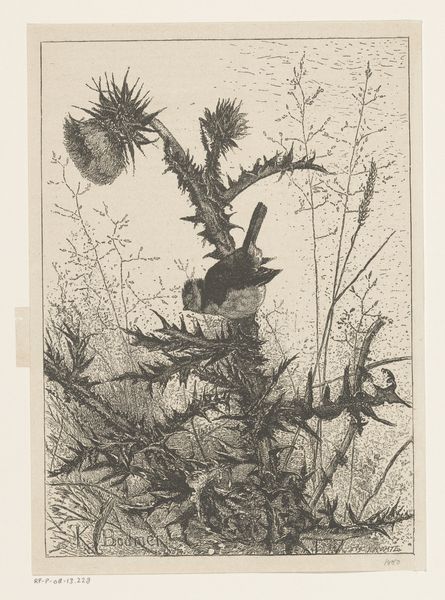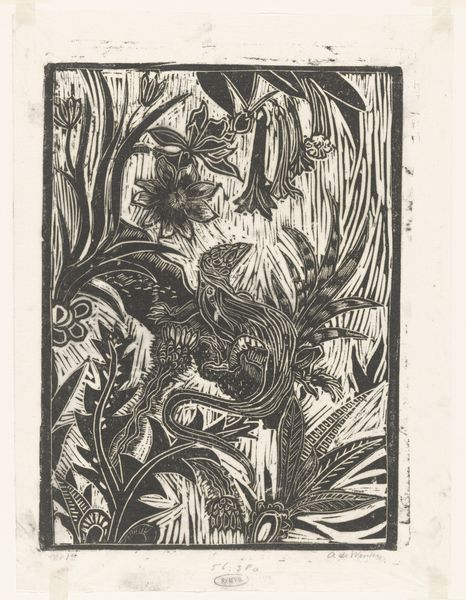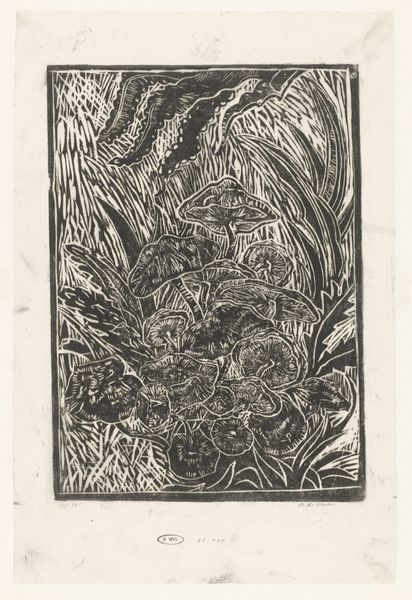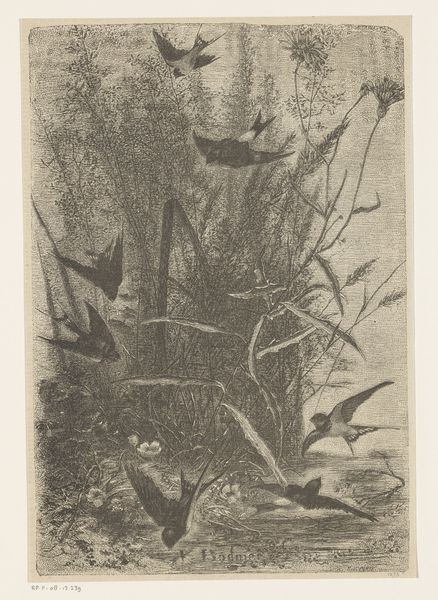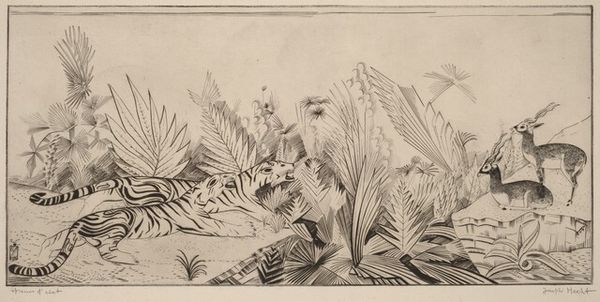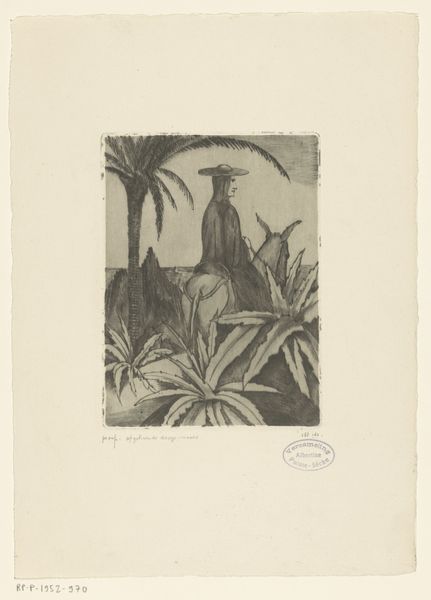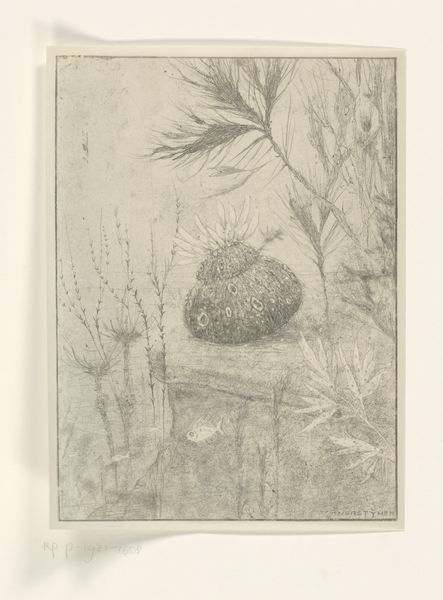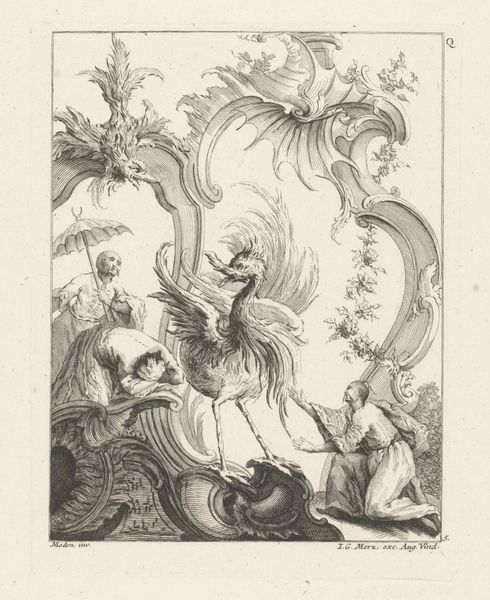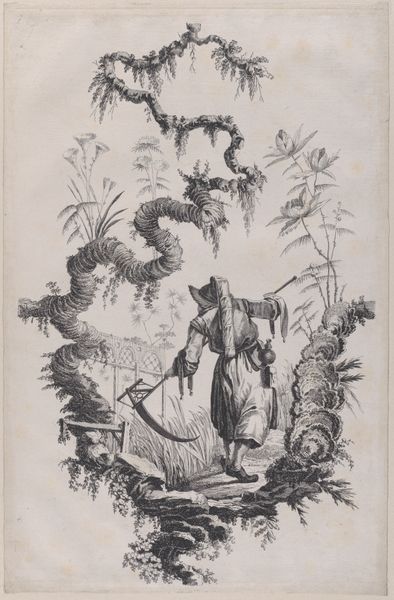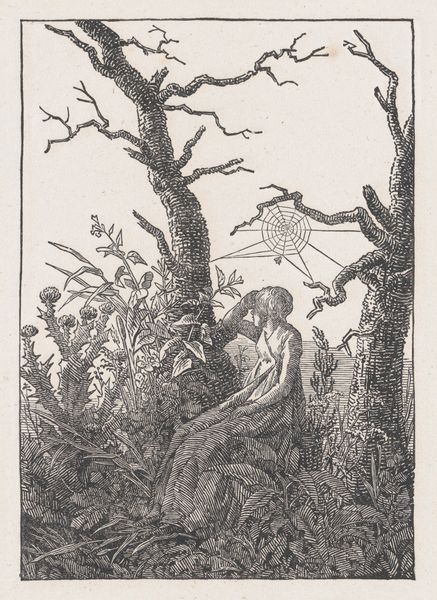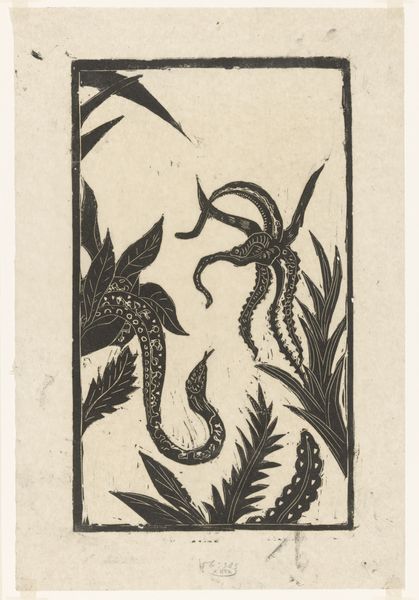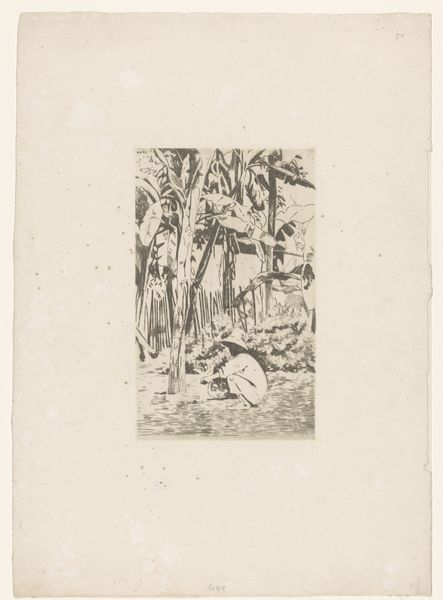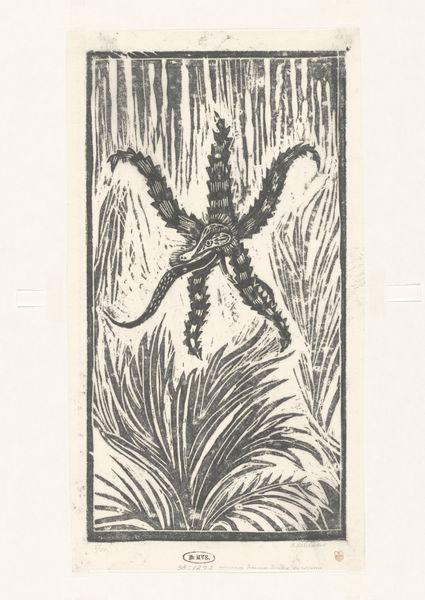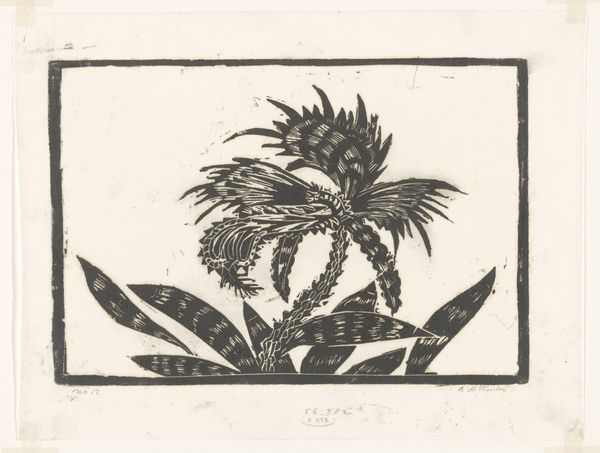
Dimensions: height 308 mm, width 228 mm
Copyright: Rijks Museum: Open Domain
Editor: So, here we have Janus de Winter’s "Kaketoe op tak bij waterlelies," created sometime between 1892 and 1951. It's a striking black and white print, made using linocut and woodcut techniques. It feels quite decorative and still, what are your initial thoughts on the piece? Curator: The immediate impact arises from the stark contrast inherent in the linocut medium. The geometric rendering of the flora and fauna transforms natural forms into near-abstract shapes. Consider the lines describing the water: repeated, parallel strokes, giving way to depth purely through their arrangement. What compositional elements stand out to you? Editor: I noticed that even though the composition seems to depict a scene with a bird, plants, and water, the rendering is quite stylized, emphasizing shapes and patterns rather than realistic representation. Curator: Precisely. Note how the cockatoo itself is built from overlapping shapes, emphasizing texture through pattern. The simplification moves beyond mere representation; it transforms the elements into signs. Do you perceive any relationship between the positive and negative space? Editor: It appears deliberate; the shapes interplay and support each other. The negative space isn't just empty background, but rather active in defining the forms. It seems almost like the artist is creating a tension between the natural and the artificial using geometric stylization. Curator: Yes, I would agree. It compels the viewer to decipher the relationships between the forms before apprehending it as a unified composition. Editor: Thinking about art nouveau and its embrace of both industrial printing methods, that push towards abstraction through geometric forms, really emphasizes how new technologies also affected fine art making. Curator: An interesting connection! The impact of these formal relationships and techniques highlights a fresh viewpoint of the natural world and graphic possibilities. Thank you. Editor: This formal breakdown definitely illuminated aspects of the composition I wouldn't have initially picked up on. Thanks for the insight!
Comments
No comments
Be the first to comment and join the conversation on the ultimate creative platform.
